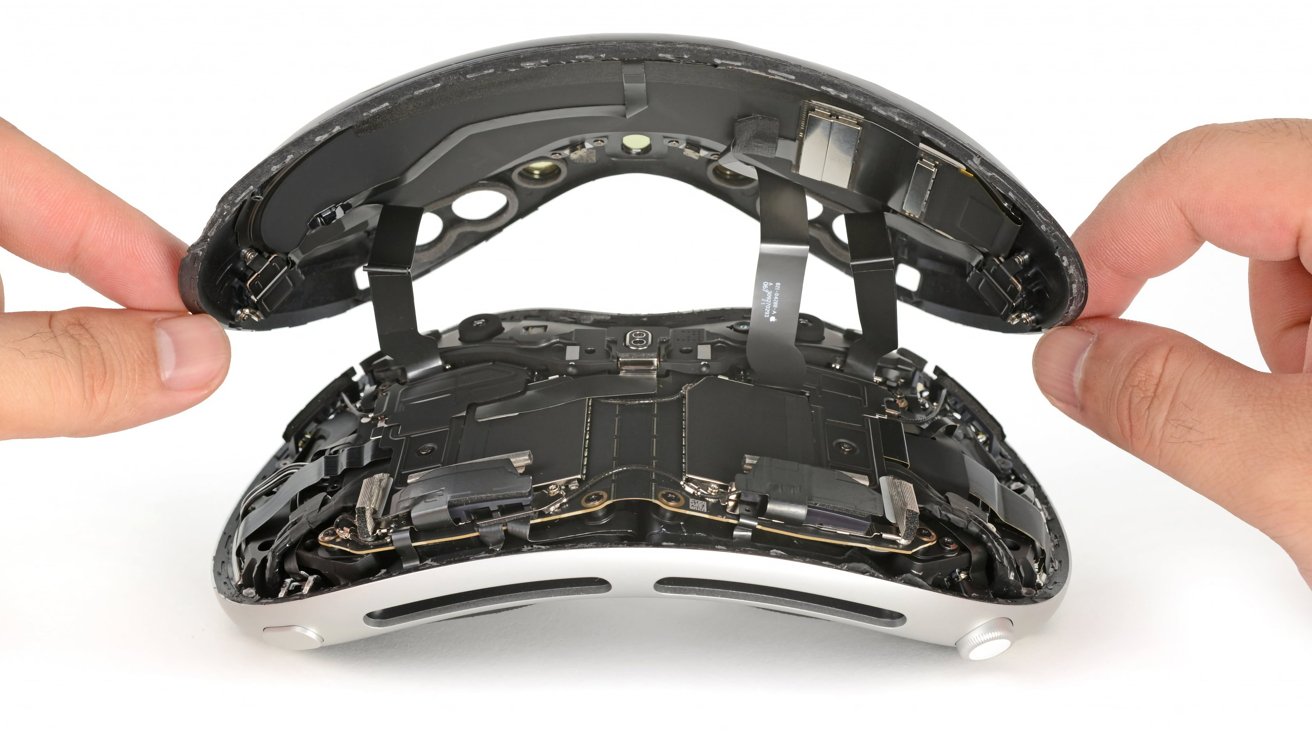The first teardown of the Apple Vision Pro has been performed, with the mixed-reality headset found to be a very complex and difficult-to-disassemble device.
A teardown of Apple's latest hardware release is a typical event in the launch cycle, and there's no difference for the Apple Vision Pro. Apple's mixed-reality head-mounted hardware has been systematically taken apart, giving a good look at the inside of the company's spatial computing platform.
The customary video and article from repair outfit iFixit isn't a complete examination of the Apple Vision Pro, but that is apparently still ongoing. While there isn't a "repairability" score at this time, it is certainly demonstrated that the headset is a highly sophisticated piece of equipment.
The teardown of "Apple's most complex piece of hardware yet" started with the removal of the front glass using heat, and was taken off with minimal damage. The speaker stems were pulled off using a SIM card removal tool, and while the use of modular parts is welcomed complete with connectors on the end, the speaker units themselves were easily broken.
Apple's use of a proprietary battery cable connection makes sense to the firm since it can't easily be yanked out. However, the plug at the other end is "unforgivable" for terminating with a non-standard oversized Lightning connector.
After removing the Light Seal and its magnetic seals, a permanent seal was found wrapped in a knit fabric, which was followed by a thin stretchy sheet of plastic.
EyeSight wonkiness
The teardown did seemingly answer problems with the low resolution and dim images it displays, as brought up in some reviews. Rather than displaying one set of eyes, the EyeSight display actually shows multiple videos, with the use of widening and lenticular layers alongside OLED.
The technique was used so that different videos could be shown from different angles creating a form of stereoscopic 3D effect for observers.
Other elements explored in the teardown include the automatic interpupillary distance adjustment system, the layering of displays and hardware, and the wide array of sensors.
Praising the Vision Pro as "insanely ambitious" with some flaws, such as weight and the tethered battery, the repair team stops short of providing an actual "repairability" score, but admits "it's not great, but on the plus side, some of the connections are quite delightful." The teardown team was apparently excited with the revelation about the SIM-removal tool's use on the side arms.
 Malcolm Owen
Malcolm Owen







-m.jpg)






 Charles Martin
Charles Martin
 Marko Zivkovic
Marko Zivkovic
 Andrew Orr
Andrew Orr
 Amber Neely
Amber Neely

 William Gallagher and Mike Wuerthele
William Gallagher and Mike Wuerthele











13 Comments
Time to cue the right-to-repair brigade…
Personally I think the tethered battery controversy is a but overblown as it removes weight from the headset though I find it hard to believe it isn’t swappable on the fly…do any actual owners have confirmation of this?
After watching this video, I am going to have a recurring nightmare now, where I am an Apple tech with a Vision Pro in pieces, and I have to put it together for a deadline, and it never works. Uggggh.
I'm glad I no longer choose to repair devices. That era is long gone for me and most others.
I do find the fans interesting. Surely the amount of heat the M2 and R1 generation is high enough to warrant it, especially next to your face. I wonder how much weight that ads and what versions of the chips could allow for high enough performance without needing to include fans. Maybe this was done in favor of including heavier heatsinks.